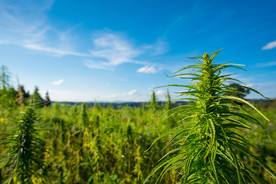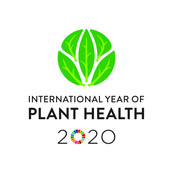Free Invasive Plant Training
Tactical Invasive Plant Management Workshops are an opportunity to learn regional invasive plant management priorities based upon distribution modeling, a cost-benefit analysis, and other factors such as proximity to areas of high biodiversity significance. There is also weed identification and reporting training. This course is free and appropriate for professional vegetation managers (parks, transportation, conservation organizations, inspectors, etc.). There is an online, self-paced course followed by a regional, live web session June 9, 10, or 11.
Registration
May Weed of the Month: Pesky Plant Trackers
This spring, the coronavirus pandemic has everyone adjusting to uncertainty and assessing the safety of our activities. Fortunately, one safe activity is the tracking of seasonal change in living organisms, or phenology. Phenology gets us outdoors, physically active, and mentally engaged. When appropriately planned, these activities are compatible with social distancing. Most importantly, observing the natural world relieves stress and offers a welcome change of scenery.
As you observe your local scenery this spring, be on the lookout for these pesky plants: wild parsnip (Pastinaca sativa) and Japanese knotweed (Fallopia japonica). As its name denotes, wild parsnip is the feral relative to the familiar food crop. Its leaves and stems contain a toxic sap that burns exposed skin when exposed to sun. Japanese knotweed was once admired as a bamboo-like ornamental plant. However, it sprouts through concrete, propagates from small root fragments, and compromises the integrity of bridges, drains, and buildings. These two species are the focus of Pesky Plant Trackers, a new participatory science project.
Read More


Minnesota's Hemp Program
Anyone wishing to grow or process hemp in Minnesota must obtain a license through the MDA Hemp Program. The MDA will begin implementing a commercial licensing program this fall, after operating a pilot program for five years.
The application period for 2020 closed on March 31. The MDA received 577 applications this year, which is a slight increase over 2019. So far, there are 390 hemp growers licensed in the state and 214 processors. Hemp growers have registered about 8,300 acres and 4.6 million indoor square feet.
The primary usage for the hemp grown in Minnesota is flower/cannabinoid production. About 80% of the registered growers intend to produce hemp for either cannabidiol (CBD) or cannabigerol (CBG). Seventeen percent intend to grow for grain production. The hemp grain is cold pressed to make oil or used as a human food ingredient. There is a small fraction of growers that intend to produce hemp for fiber production. No matter what the hemp is grown for, MDA inspectors visit every hemp field and indoor grow location, take samples, and test for THC levels. Hemp must contain 0.3% THC or less to be compliant with state and federal laws.
MDA Hemp Program
|

"Murder Hornet" Information
The news reported on the detection of the world's largest hornet, Vespa mandarinia, in Washington earlier this month, calling the Asian giant hornets "murder hornets." These hornets are insect predators, prefer eating honey bees, and can completely destroy a colony. The University of Minnesota Extension Service has more information on these large hornets.
Read More
|
Coronavirus Recommendations
The MDA has prepared many recommendations for citizens, staff, and employers in relation to growing and selling plants safely.
To find a local farmers market, U-pick farm, or other Minnesota grown products, please visit the Minnesota Grown directory. For more information on COVID-19 in Minnesota please visit mn.gov/covid19.

2020 Year of Plant Health
The United Nations declared 2020 as the International Year of Plant Health (IYPH). The year is a once in a lifetime opportunity to raise global awareness on how protecting plant health can help end hunger, reduce poverty, protect the environment, and boost economic development.
Read More
|

Minnesota Certified Firewood
The Minnesota Department of Agriculture has certified eight firewood producers in the state of Minnesota for heat treatment of firewood. Look for the logo when purchasing firewood. It means the firewood is safe to move and is free of emerald ash borer.
Certified firewood producers:
- Emily Forest Products
- JN Firewood
- Paul's Fireplace Wood Inc.
- Price Firewood
- Sunset Firewood Company
- TSL Firewood
- Wood Chuckers Firewood LLC
- Leroy Habiger "The Firewood Man"
|
|